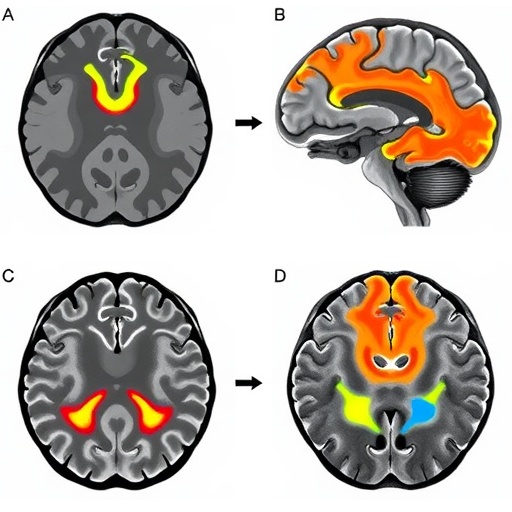Recent advancements in diabetes research have opened new avenues for understanding how early indicators of glucose dysregulation can signal significant changes in pancreatic function, particularly in the β-cells responsible for insulin production. A groundbreaking study led by Ayash, Kabalan, and Chamaa investigates the role of soluble apoptotic biomarkers—Fas, TNFR1, and TRAIL-R2—in the early dysfunction of β-cells linked to glucose metabolism disorders. This research not only sheds light on the mechanistic nuances of cell apoptosis but also highlights potential diagnostic tools for early intervention in diabetes management.
The need for early detection of glucose dysregulation has gained urgency as the prevalence of diabetes continues to rise globally. Diabetes, which is characterized by persistent hyperglycemia, is fundamentally associated with the compromised function of β-cells. These pancreatic cells are vital for producing insulin, a hormone that regulates blood glucose levels. The study’s focus on soluble apoptotic biomarkers serves as a crucial nexus between early β-cell dysfunction and the broader pathophysiology of diabetes.
Fas, TNFR1, and TRAIL-R2 are key players in the apoptotic signaling pathways that lead to programmed cell death. The authors of this study delve into how these biomarkers can be associated with β-cell failure, potentially offering clinicians and researchers new tools for assessing the health status of pancreatic cells in individuals at risk for developing diabetes. By exploring their relationship with glucose dysregulation, the researchers aim to establish a link between immunological markers and metabolic health.
The study utilized a cohort of individuals demonstrating early signs of glucose dysregulation. Samples were collected and analyzed to ascertain levels of the mentioned soluble apoptotic biomarkers. The findings revealed a significant correlation between elevated levels of these biomarkers and impaired β-cell function, suggesting that monitoring these apoptotic signals could serve as an early warning system for future diabetes development.
This research also emphasizes the complex interplay between apoptosis and glucose metabolism. As β-cells encounter stress from fluctuating glucose levels, they may become susceptible to apoptosis, thereby exacerbating insulin insufficiency and metabolic disturbance. Understanding this relationship provides a platform for developing targeted therapies. By potentially modulating these apoptotic pathways, it may be possible to preserve β-cell function and enhance insulin sensitivity in at-risk populations.
Additionally, the implications of this research extend beyond clinical diagnostics. As findings suggest a direct correlation between certain biomarkers and β-cell health, they initiate discussions about developing therapeutic strategies that focus on these pathways. Future interventions could focus on inhibiting the action of these apoptotic markers, which might consequently protect β-cells from early degeneration resulting from metabolic stress.
The study also aligns with ongoing global research efforts aimed at understanding the multifactorial nature of diabetes. Factors such as genetics, lifestyle, and environmental influences play significant roles in the development of glucose dysregulation and subsequent diabetes. By incorporating apoptotic biomarkers into this multidimensional framework, researchers may gain a more comprehensive understanding of diabetes pathogenesis.
The exploration of soluble biomarkers is particularly relevant given the limitations associated with traditional diagnostic methods, which often rely on late-stage detection of diabetes. The progression from normal glucose metabolism to full-blown diabetes typically spans years, during which critical interventions might prevent or delay disease onset. By utilizing biomarkers that can detect dysregulation much earlier, healthcare professionals could pivot towards a preventive approach rather than a reactive one.
The authors have meticulously discussed the potential of integrating these biomarkers into routine clinical practice. This could empower clinicians to stratify patients based on their risk profiles more accurately and implement personalized treatment strategies. Early lifestyle modifications or pharmacological interventions could mitigate the progression of glucose intolerance to overt diabetes, setting the stage for healthier long-term outcomes.
Moreover, understanding the signaling mechanisms involved in β-cell apoptosis could lead to innovative therapeutic interventions targeting these pathways. The ability to manipulate the interaction between these biomarkers and β-cell health opens doors for drug development focused on preserving β-cell integrity and function. Researchers are already exploring compounds that could influence apoptotic signaling, potentially leading to breakthroughs in how diabetes is treated and managed.
In summary, the investigation led by Ayash, Kabalan, and Chamaa represents a significant advance in our understanding of the early mechanisms of diabetes development. The association of soluble apoptotic biomarkers with β-cell dysfunction offers promise for novel diagnostic approaches and therapeutic interventions. As the research community continues to unravel the complexities of diabetes, studies like this reinforce the importance of early detection and intervention as pivotal strategies in combating this global health crisis.
The call to action remains clear: understanding the early indicators of diabetes through innovative research can be the key to breaking the cycle of progression and managing this chronic disease effectively. As the findings of this study reverberate through the scientific community, they may foster a new era of diabetes care that prioritizes prevention, early diagnosis, and tailored treatments.
Subject of Research: The association of soluble apoptotic biomarkers with β-cell dysfunction in early glucose dysregulation.
Article Title: Association of soluble apoptotic biomarkers (FAS, TNFR1 and TRAIL-R2) with β-cell dysfunction in early glucose dysregulation.
Article References:
Ayash, R., Kabalan, Y. & Chamaa, S. Association of soluble apoptotic biomarkers (FAS,TNFR1 and TRAIL-R2) with β-cell dysfunction in early glucose dysregulation.
BMC Endocr Disord 25, 218 (2025). https://doi.org/10.1186/s12902-025-02001-3
Image Credits: AI Generated
DOI: 10.1186/s12902-025-02001-3
Keywords: Diabetes, Glucose Dysregulation, β-cell dysfunction, Apoptotic Biomarkers, Preventive Healthcare.
Tags: advancements in diabetes researchcell apoptosis mechanismsdiabetes management diagnostic toolsearly detection of glucose dysregulationearly intervention in diabetesFas TNFR1 TRAIL-R2 signalingglucose metabolism disordersinsulin production failure indicatorspancreatic function and insulin productionpathophysiology of diabetessoluble apoptotic biomarkersβ-cell dysfunction in diabetes





